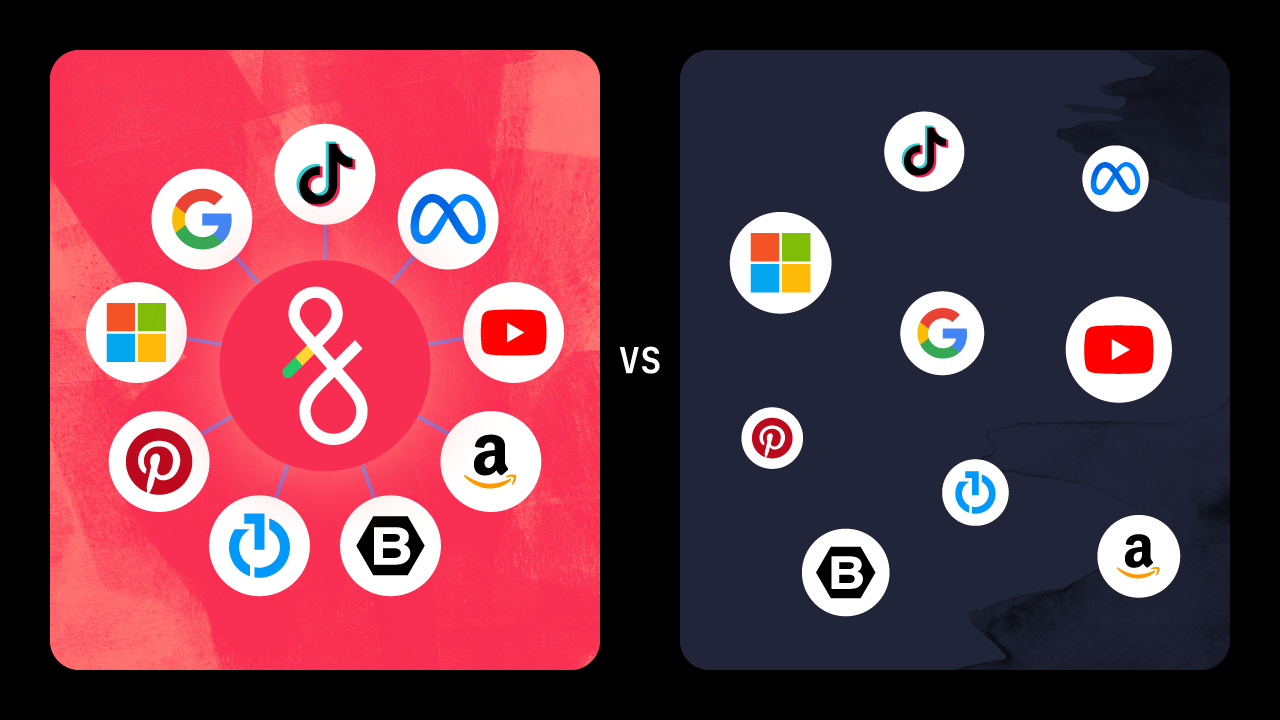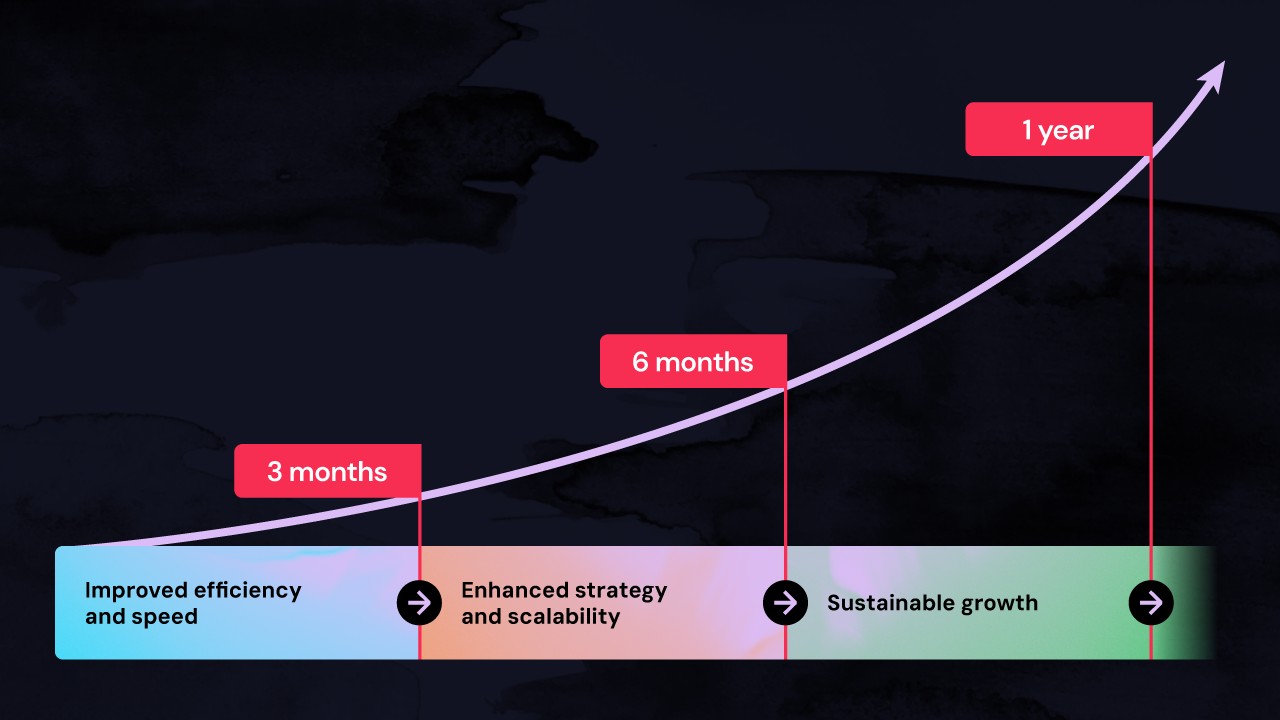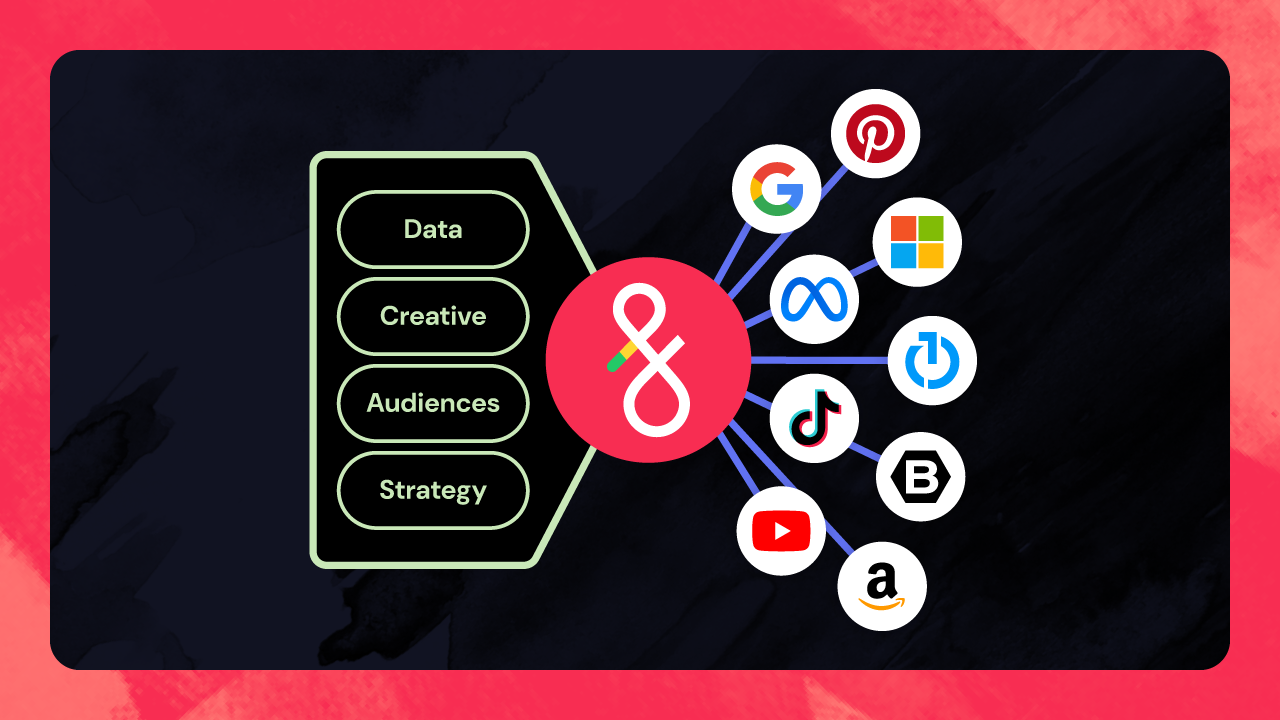The future of advertising operations will be shaped by how intelligently and seamlessly teams use AI: not just to move faster but to work strategically.
Yet for many advertisers, the promise of AI is unfilled. Disconnected AI tools means that teams must “swivel chair,” which costs time and creates friction. A lack of centralized advertising data leads to vague or unhelpful insights and workflows don’t translate to the real-world needs of ad teams.
That’s what sets Muse AI apart. Muse is built into Fluency’s Digital Advertising Operating System (DAOS), not bolted on. That enables it to function as a true extension of your team.
What is Muse? Integrated AI for digital advertising
Muse is Fluency’s artificial intelligence (AI) technology. It lives inside Fluency’s secure operating system with a closed-walled AI architecture and no data egress.
Simply put, Muse isn’t just another AI tool your team has to constantly switch to while working. It’s deeply integrated into the systems you already use every day, giving your AdOps teams the ability to apply automation, insights, and content generation without jumping between tools, losing control of outcomes, or worrying about data privacy.
We created Muse to empower digital advertising teams to use AI in a controlled, brand-safe, and measurable way. From surfacing meaningful insights to accelerating campaign execution and reporting, Muse reduces busywork without removing human oversight, giving your team the confidence to adopt automation responsibly.
Best of all, Muse operates securely within Fluency's core operating system. That means your data stays protected, your process remains auditable, and your team is in control.
Hear from our President and Chief Product Officer, Eric Mayhew, about our vision for Muse and agentic AI for digital advertising teams:
Uncover advanced campaign insights with Muse AI
Success in digital advertising hinges on the ability to swiftly analyze and act on multichannel performance data, surface optimization opportunities, and communicate clear wins. For both agencies and enterprise brands, campaign performance demands fast, confident decision-making.
Because Muse lives within Fluency, which integrates directly with major ad publishers, Muse can read and interpret performance data from major channels across your entire portfolio.
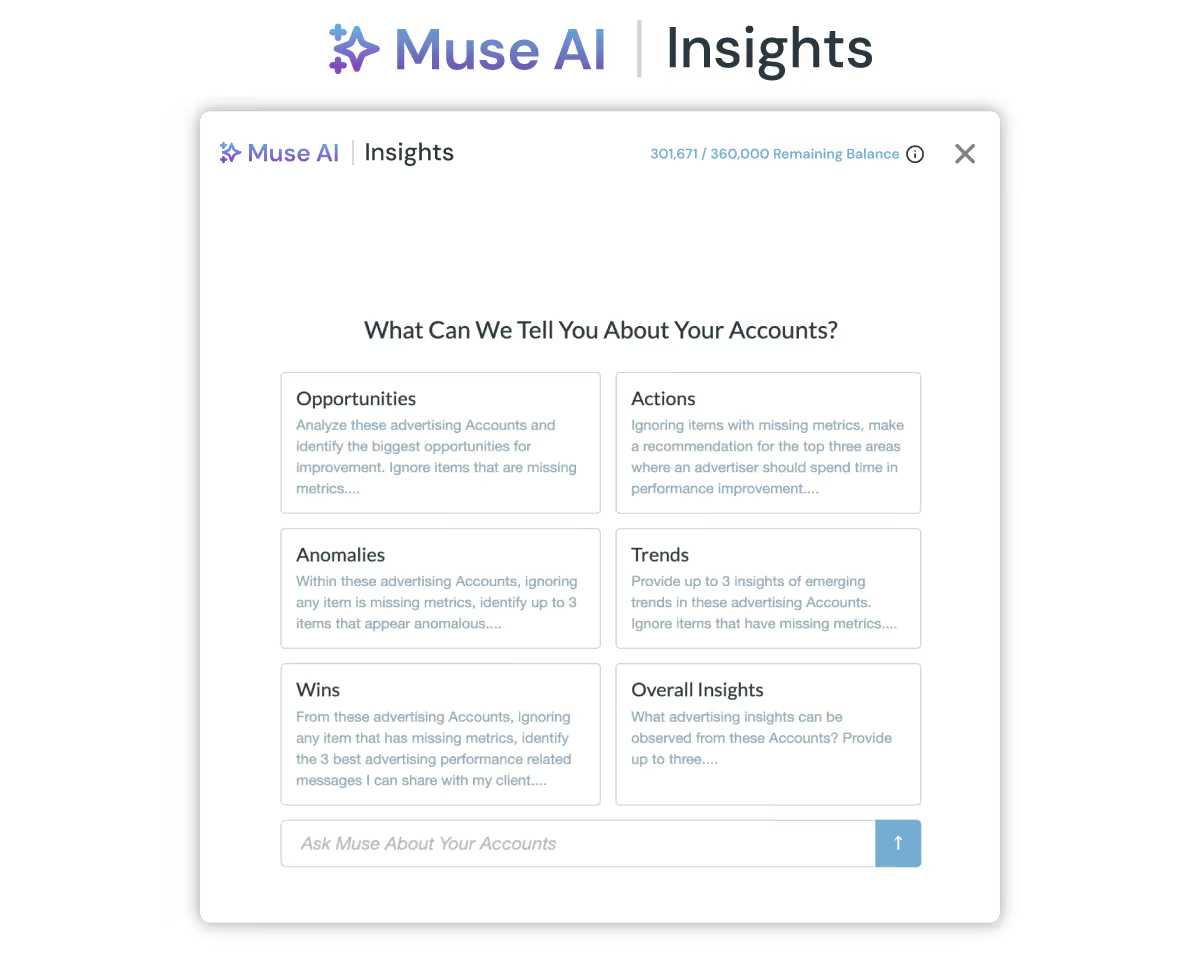
That means your team can surface actionable insights in real time instead of sifting through tabs, tables, and dashboards. You can instantly understand what changed and why, what matters, and where to focus now.
For example, you can ask Muse to help you understand:
- “Which campaigns performed best over the last 30 days?”
- “What changed in our performance after last week’s budget update?”
Muse can answer these questions instantly, providing fast, reliable answers that drive confident action for performance marketers. It’s a shortcut in terms of time and effort, not impact and accuracy.
Let’s take a look at some ways Muse supports teams in their daily AdOps workflows.
Streamlining content creation with Muse AI
Ad copy development can slow down even the best teams, especially when handling high-volume campaigns across dozens of clients or product lines. Whether you’re at an agency onboarding new clients or work on an enterprise team preparing a seasonal launch, content production demands a lot of time.
You need to manage (and hit) different character counts for different channels and placements. Variation and volume are both key if you’re using channel-specific AI or PMax to optimize messaging in real-time. Simply put, you’ve got a lot of words to write.
Muse accelerates ad content generation while keeping compliance, tone, and brand voice in check. Based on campaign objectives and account-level context, Muse drafts headlines, descriptions, and keywords at scale—ready for use in paid search and display.
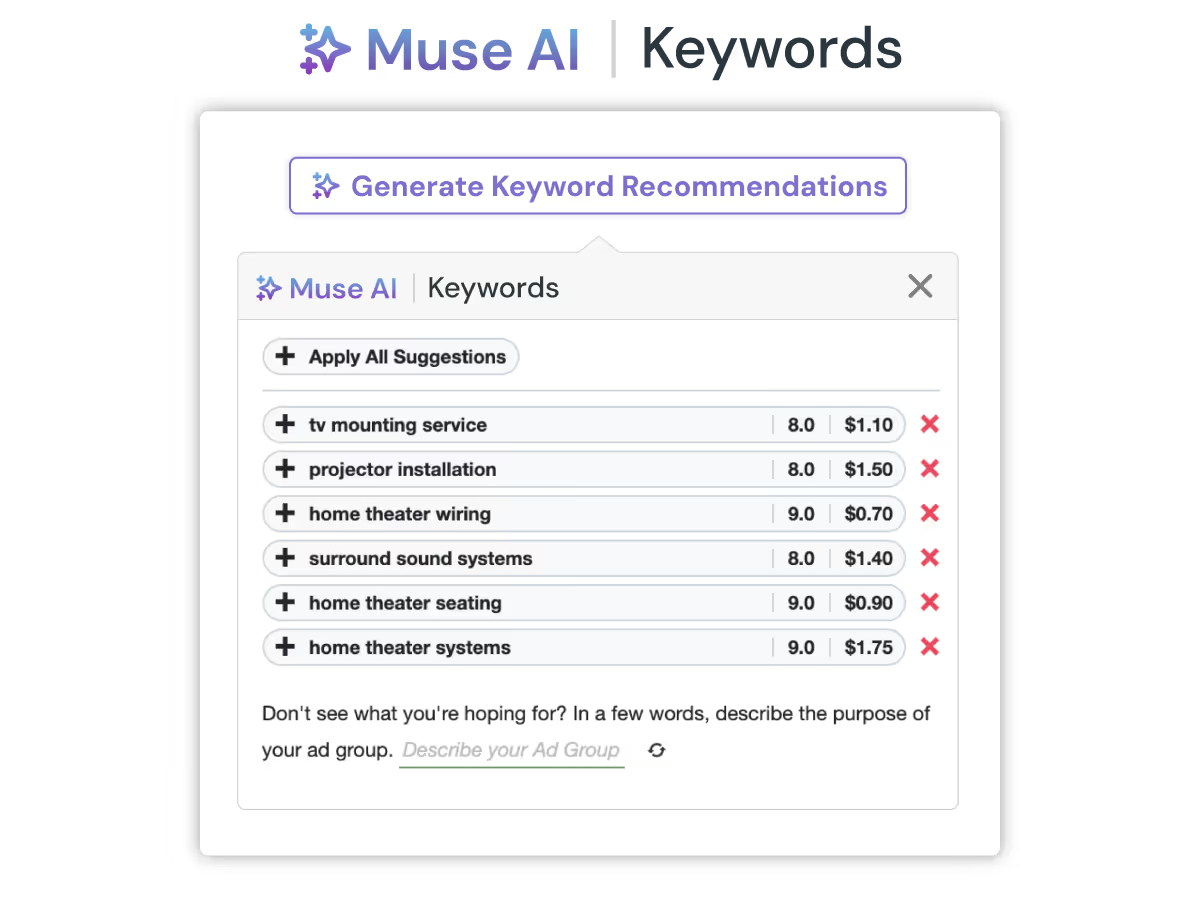
Best of all, you can use Muse seamlessly wherever you’re working. Muse can be accessed throughout Fluency’s system at key points in your workflow, ready when you need it, right in Fluency’s interface. Rather than jumping to use outside AI tools when writing ads, Muse generates copy that can be instantly implemented into campaigns.
For example, let’s say you’re a campaign manager handling 20+ client accounts. They all need fresh, on-brand ad copy aligned with industry regulations by Friday.
Muse can generate compliant content variants for all accounts in a single session, right where you’re building the ads: no copy-pasting, no formatting rework. Best of all, Muse can help with keyword recommendations, including negative keywords, to keep everything strategically on track.
By removing the time sink of manual writing, Muse frees teams to spend more time testing and optimizing.
Optimized workflows for better results at scale
It’s hard to pull out the most important things you need to know from a dashboard—and even harder to take key learnings from data and put them into action.
Muse eliminates the manual work of connecting performance dots by automatically surfaces key wins, risks, and optimization opportunities across your entire portfolio. This comprehensive analysis also factors in external variables like weather trends, seasonal patterns, and performance anomalies.
What sets Muse apart is its ability to provide succinct, timely, and prescriptive recommendations about how to get things back on track. For example, if CPAs spike unexpectedly or impression share drops, Muse flags the issue for you, analyzes possible contributing factors, and suggests specific actions you can take to get everything running smoothly again.
Muse can also recommend optimizations for bottlenecks, inefficiencies, and missed opportunities across your campaigns and operations. These incremental changes add up quickly, making it possible to continuously refine your strategy with less effort. From there, you can scale what works to other accounts, channels, or campaigns for maximum workflow efficiency.
Using Muse: Integrated AI built for daily advertising workflows
Using Muse is as simple as asking your questions directly within Fluency. Muse operates as an intuitive, embedded AI collaborator that understands your goals, data, and strategy. This means you don’t have to learn a new system or disrupt your daily processes.
Whether you’re troubleshooting campaign performance, brainstorming ad copy, or analyzing trends, Muse is available right within your workflow to assist, guide, and execute.
Example Muse prompts to use within Fluency:
- “Which campaigns have impression share loss and how can I fix it?”
- “Segment my conversions by conversion type for the last month.”
- “Why is [budget name] over/under pacing and how can I fix it?”
These prompts highlight how Muse already fits into your team’s daily advertising workflows. The answers your team needs and the busywork tasks that take up their time can be resolved faster and more efficiently with Muse as a collaborative coworker.
Since Muse is integrated into Fluency’s platform, your team can access these time-saving capabilities without switching tools or losing focus. It’s AI truly designed to make your workflows faster, smarter, and more efficient.
What’s next for Muse? Empowering digital advertising teams with AI
As AI continues to encroach upon every aspect of the digital advertising ecosystem, we know that the future of our industry can feel daunting and uncertain. But we don’t see it all as doom and gloom.
Since we first started building Muse in 2023, it has gone through many advancements and evolutions. One thing remains constant, though: Muse was not built to replace human advertising strategists. It was built to support them.
We believe in an AI-positive workplace where people remain in control and AI does the heavy lifting. Ultimately, we envision a world where teams have the ability to authorize agentic AI to make changes and optimizations directly on their behalf.
That’s why we are continuously investing in new advertising AI use cases that support the entire campaign workflow, from start to finish—creation, launch, optimization, reporting, and more.
If you want to see Muse in action and learn how it can help with your biggest AdOps challenges, reach out and set up a call.


